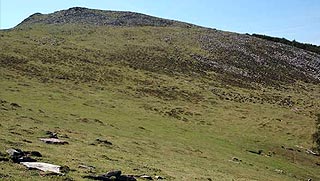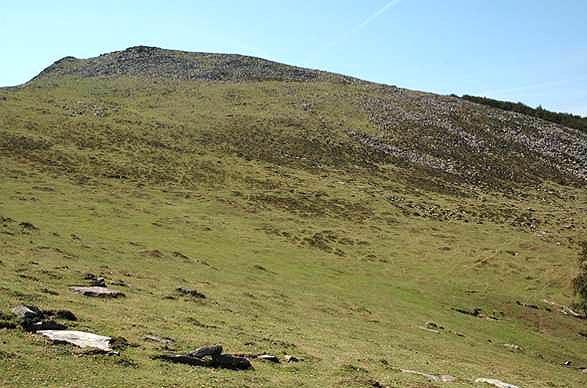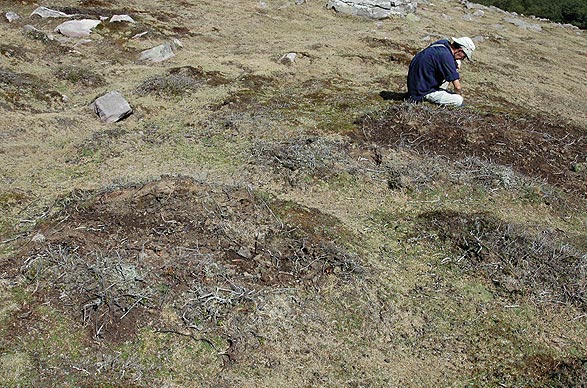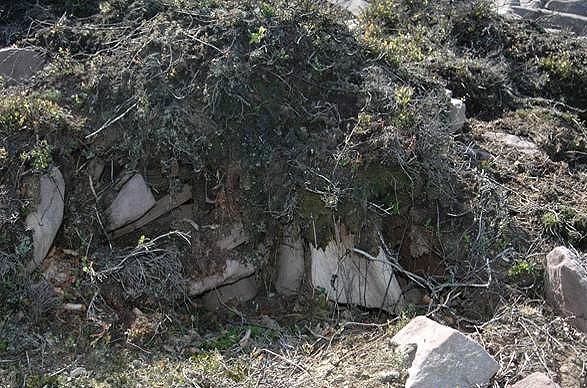Name of the site: Xuriain
Protection categories: Included in SCI ES2200018 Belate and listed as Protected Non-developable Land due to its Environmental Value, Wetlands, in Navarre’s Land Planning Programme 3 “Central area”.
Location: The site is located in the municipality of Anue, its eastern slope lying alongside the boundary with Esteribar.
Region: Navarre
Coordinate reference: XN1765
Surface area of the wetland: 2.74 hectares
Altitude: 1320-1395 m
See PDF map

This site, unique in that it is the only ombrotrophic site in Navarre, covers an area of 2.74 ha on a slope at the top of Monte Xuriain and faces N-NW.
Due to its location, the water that feeds this site can only come from rainfall and mist (hence its ombrotrophic nature).
It is in a very poor state of conservation because areas of heathland have been burned as a means of controlling the environment and very few traces of the flora and fauna characteristic of mires remain. The characteristics of the flora and the origin of the water point towards oligotrophic conditions.
There are two levels of sandstone scree, between which sit flat areas with shallow peat substratum, with the exception of one area at the foot of the first level of scree which has 45 cm of peat consisting of the remains of sphagnum. In the area with the deepest peat deposit, there are small mounds measuring 25-40 cm with bilberries and Sphagnum spp.
Very wet heathland, with mounds measuring 20-30 cm high, currently with Leucobryum glaucum, grows on the second level of scree.
- MOST IMPORTANT VALUES
Uniqueness
This is only clearly ombrogenous site detected in Navarre.Biological and ecological values
In terms of flora, the most notable presence when it comes to bryophytes is that of Lophozia incisa, a new bryophyte in the Navarrese catalogue; the area also has the second largest population of Kurzia trichoclados in Navarre and a relatively abundant presence of Racomitrium lanuginosum, an Atlantic aerohygrophilous moss.
As far as vascular plants and habitats are concerned, it should be pointed out that the area has lost a great deal of interest due to fire clearance.Historical and paleoecological values
The peat-forming habitats at the Xuriain site do not possess significant deposits from a paleoecological point of viewHabitats of Community Interest
Hábitat Nombre 4030 Brezales secos europeos 6230* Formaciones herbosas con Nardus, con numerosas especies, sobre sustratos silíceos de zonas montañosas (y de zonas submontañosas de la Europa continental) Flora
There are old citations of Huperzia selago and Trichophorum caespitosum subsp. germanicum at the summit of Xuriain, but their presence has not been verified recently.
20 species of vascular plants and 16 bryophyte species have been recorded.Fauna
The presence of fauna specific to peatlands and mires has not been registered.- PHOTOS

General view of the Zuriain site (P. Heras)




